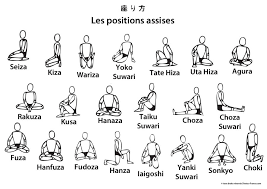Introduction
Sitting is a natural part of our everyday life—at work, during meals, or while relaxing. But did you know that there are many sitting positions names, each with its own purpose, history, and effect on posture? From formal etiquette to yoga and meditation, different sitting postures play a vital role in how we interact, relax, and stay healthy.
This article explores various types of sitting positions, explaining their names, meanings, and cultural or practical significance.
1. Cross-Legged Sitting (Sukhasana)
One of the most recognizable sitting positions, especially in yoga, is the cross-legged position, also called Sukhasana in Sanskrit. This simple posture involves sitting on the floor with your legs crossed and hands resting on the knees or in the lap. It promotes stability, relaxation, and calm breathing.
Common Uses:
- Meditation
- Mindfulness
- Relaxed conversation on the floor
2. Lotus Position (Padmasana)
The lotus position is a more advanced version of cross-legged sitting. Known as Padmasana, it involves placing each foot on the opposite thigh. It is deeply symbolic in Eastern meditation traditions and is believed to help energy flow freely.
Common Uses:
- Yoga and deep meditation
- Energy balance practices
3. Kneeling Position (Seiza)
In Japanese culture, Seiza refers to sitting on the heels with the knees folded beneath. The spine remains upright, and hands rest on the thighs. It shows respect and discipline.
Common Uses:
- Traditional Japanese ceremonies
- Martial arts practices
- Formal settings in East Asian cultures
4. Squatting Position
Squatting is a natural sitting position often seen in Asia and among children. The heels remain flat on the floor while the hips drop down.
Common Uses:
- Outdoor or ground-level seating
- Waiting or short rests
- Cultural traditions in South Asia
5. Chair Sitting (90-Degree Sitting)
This is the most common sitting posture in modern life. The chair sitting position keeps your knees at a 90-degree angle, with feet flat on the floor and the back supported.
Common Uses:
- Office work
- Dining
- Driving
6. Reclining Sitting
The reclining sitting position involves leaning backward while sitting, usually with back or arm support.
Common Uses:
- Watching TV
- Lounging or resting
- Casual conversation
7. Tailor Position
Similar to cross-legged sitting, the tailor position allows the knees to drop more naturally toward the floor, creating a comfortable base.
Common Uses:
- Stretching
- Reading on the floor
- Light meditation
Related more articles, plant names for boys
8. W-Sitting
W-sitting involves sitting with the knees bent and legs spread out to the sides, forming a “W” shape. This is common in children but not recommended for long periods.
Common Uses:
- Toddlers and young children
- Floor play
9. Criss-Cross Applesauce
A child-friendly term for sitting cross-legged, criss-cross applesauce is widely used in schools and daycares. It promotes stillness and comfort.
Common Uses:
- Story time
- Classroom activities
- Ground play
10. Savasana (Corpse Pose)
Used in yoga, Savasana is technically a lying down pose, but it is sometimes used as a resting “seated” posture after intense activity.
Common Uses:
- Yoga cooldown
- Deep relaxation
11. Side Sitting
Side sitting involves resting both legs to one side while keeping the torso upright. It’s elegant but can put uneven pressure on the hips.
Common Uses:
- Casual or polite sitting
- Traditional gatherings
12. Butterfly Position
This position involves joining the soles of the feet together with knees pointing out. It resembles a butterfly and is used in yoga and stretching.
Common Uses:
- Flexibility training
- Meditation
- Floor stretching routines
13. Z-Sitting
Often confused with W-sitting, Z-sitting involves one leg bent forward and one leg bent backward, forming a Z-like shape. It opens the hips but requires flexibility.
Common Uses:
- Dance stretches
- Floor resting with variation
14. Half-Lotus Position
In this position, one foot is placed on the opposite thigh, while the other leg remains underneath or slightly bent. It’s a more accessible version of the full lotus pose.
Common Uses:
- Beginners in yoga
- Meditation
15. Sitting with Legs Stretched Out
This is a relaxed and informal position where both legs are stretched straight out in front of you. It may look lazy but is common when resting or watching TV.
Common Uses:
- Casual rest
- Waiting or resting on the ground
Why Sitting Position Names Matter
Each sitting posture has a different impact on your body and mind. Some promote concentration and balance, while others provide comfort or social etiquette. Understanding these names helps you:
- Choose the right posture for the activity
- Avoid discomfort or health issues from bad posture
- Appreciate cultural practices and traditions
Final Thoughts
Knowing the different sitting positions names can help you sit more mindfully, whether you’re meditating, working, or relaxing. Some postures reflect deep-rooted traditions, while others simply offer physical comfort. Whether it’s the formal Seiza or the playful criss-cross applesauce, every sitting position has its unique purpose and value.
Related more articles, visit here
 :
https://thenamesprovider.com/
:
https://thenamesprovider.com/

